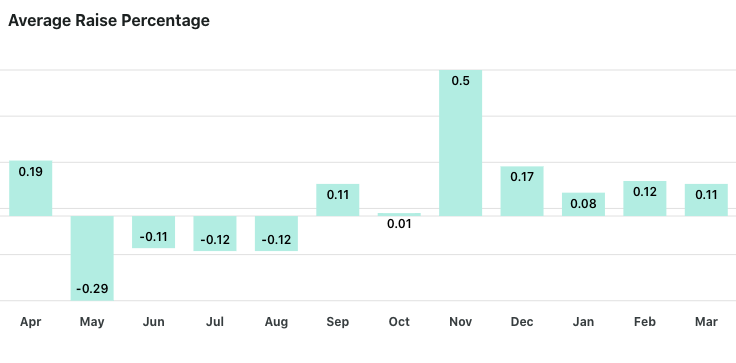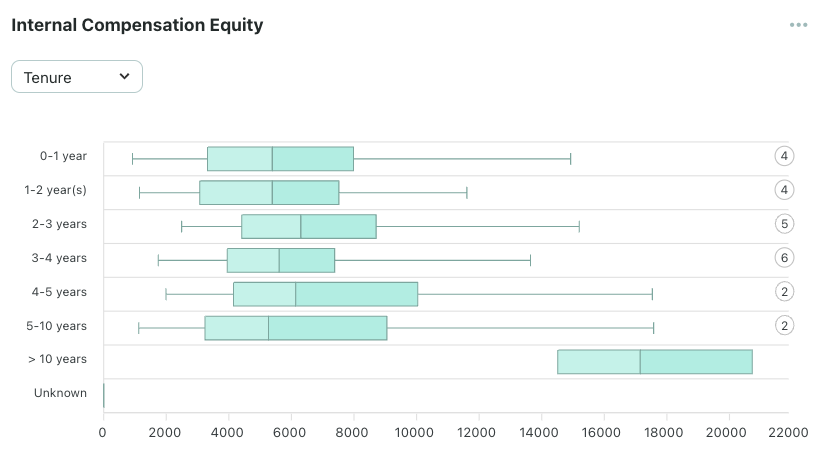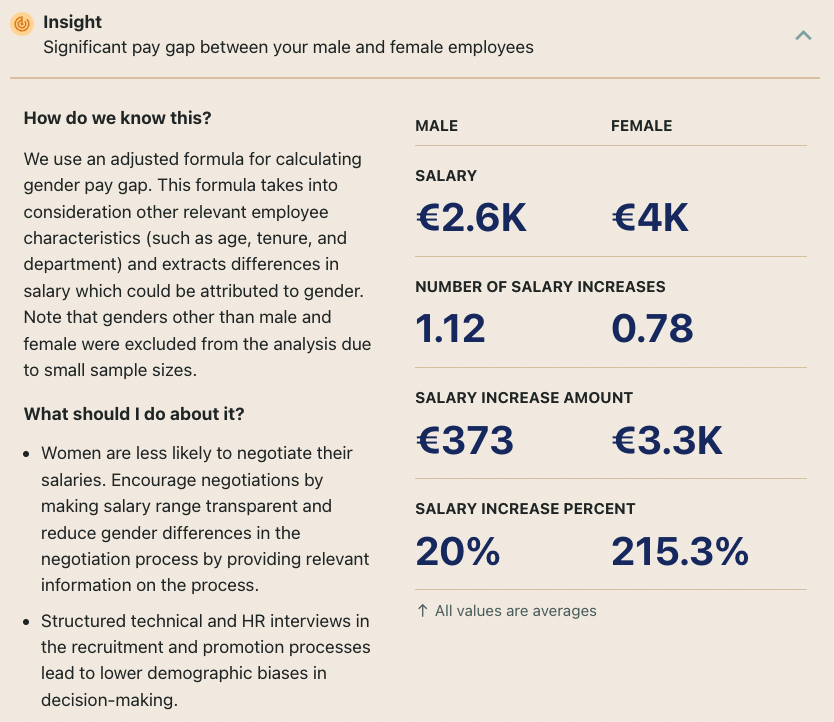Compensation management software is used for employee remuneration, rewards, benefits, and equity. Get an overview of the top tools in this space.
Compensation management software includes tools used for salary benchmarking, compensation management, benefits administration, and rewards distribution.
In this article, we look at the functions of these different compensation tools and apps that help you manage compensation and benefits in your organization — from a startup to an enterprise.
This article is part of our series on creating an optimal HR tech stack. It will be part of our “People Ops Guide for CHROs” e-book that’s in preparation. Sign up to be the first to find out once the guide is out.
What kinds of compensation tools are there and how do they work?
Employee compensation no longer includes just the monetary remuneration that employees get for their work. Nowadays, the total compensation package consists of benefits such as healthcare, retirement plans, wellness programs, tuition reimbursements, and work flexibility.
As a result, HR teams need tools to manage not only salaries, but also other benefits that employees receive.
There are five types of compensation management software that HRs use to cover compensation management end-to-end:
- Salary benchmarking tools
- Compensation management software
- Benefits administration tools
- Equity management software
- Benefits and rewards tools.
Salary benchmarking tools
Salary benchmarking tools are used to determine the optimal salaries for a certain role based on rich data insights.
Traditionally, it was the large enterprises that used salary benchmarking tools, but these days, much smaller companies embrace them too.
More than ever, organizations need to proactively follow salary trends and adapt their current compensation packages to prevent employee turnover. Also, if they want to attract highly qualified candidates to their positions, they need to offer competitive compensation and benefits packages.
Salary benchmarking tools use pay research data to account for organizational, regional, and other data variations in compensation. They help you optimize compensation to achieve balance – satisfied employees on one side, and organizations’ fiscal health on the other.
Some companies also provide salary benchmarking services that go above the pure salary benchmarking, and include consulting on complex pay decisions. These include taking into account strategic development plans, pay equality, and prioritizing competitive rewards for top performers.
Best salary benchmarking tools to consider
- Bureau of Labor Statistics (BLS): For US companies, the Bureau of Labor Statistics is an excellent source of salaries data. It has a large database filled with information from government-run nationwide surveys.
- Comptryx | Mercer: provides international salary-benchmarking data and is geared towards tech-focused companies. In addition to compensation data, it helps create customized offerings.
- Levels.fyi: allows comparing salary data and career levels across companies.
- Salary.com: offers employer-reported salary information with more than 800 million data points, as well as compensation management software.
- PayScale: entails a comprehensive database with both employee- and employer-reported salary data; has compensation management functionalities.
- ZipRecruiter: isn’t as refined in terms of data richness and filters, but is easy to use and offers simple visualization for salary benchmarking.
- LinkedIn Salary: free online tool available to LinkedIn users that allows employers to determine approximate compensation ranges.
Compensation management software
Compensation management tools are used to plan and administer compensation packages. Of all the different types of compensation tools covered here, compensation management software makes the core of the compensation tech stack.
This type of compensation software is used to adjust compensation policies, for example planning employee bonuses. It is also very often a part of a larger system such as HRIS. The reason behind it is the interconnected data. For example, information from performance management software helps spot top performers and proposes adjustments to their compensation packages accordingly.
Plus, certain compensation management tools help HRs administer salaries to teams with a complex compensation structure such as sales, which often includes varying bonuses with several performance dependencies.
What to look for in a compensation management tool?
Compensation management tools should provide:
- A centralized dashboard, with compensation data statistics and visualization
- Administering compensation policies and bonus structures
- Salary budgeting functionalities
- Reporting capabilities and data export.
Best compensation management tools to consider
As mentioned, compensation management tools are often an integral part of HRIS systems. Mostly used by enterprises and large SMBs, most popular HRIS + compensation management solutions include Workday, SAP SuccessFactors, and Paylocity.
When it comes to standalone compensation software, here is a rundown of leading tools to consider:
- Pequity: helps HRs create equitable compensation packages, by comparing internal company data with wider market stats, with a big focus on compensation across teams.
- Pave: on top of compensation software, Pave also assesses compensation fairness, running organization-wide merit cycles in a centralized place.
- Paycom: with employee-driven payroll technology at its core, Paycom also includes several other features to support employee performance. Time and attendance and scheduling functionalities make the compensation management easier for companies with many hourly employees.
- PayScale: offers a range of compensation tools with the aim to streamline, centralize, and automate the compensation process. Special attention is paid to data collection and validation methodologies.
- Anaplan: aimed at strategy and planning across the enterprise to move the business forward. Also entails sales performance management and sales planning functionalities, useful for companies whose sales’ teams have complex salary structures.
- Simply Merit: this real-time compensation management solution helps HRs optimize merit budgets, annual bonuses, and even equity grants. It can be used to model the holistic impact of compensation adjustments before their implementation.
Benefits administration tools
Benefits refer to indirect and non-cash compensation such as 401k retirement plans and health insurance.
This type of software helps organizations manage administering, overseeing, and adjusting benefits for their employees. Just like compensation management tools, you will often encounter them as part of a HRIS due to being one of the core functionalities in HR.
- Find out what are the 14 best HRIS systems on the market and if they entail compensation and benefits management.
Best benefits administration tools to consider
Benefits administration solutions are often a part of a wider HRIS system, just like compensation management. Some of the best-rated HRISes with this functionality include ADP Workforce Now, Paylocity, and Rippling.
Benefits administration tools predominantly operate in the US due to the elaborate benefits system that includes healthcare and retirement savings.
- Benefitfocus: this benefits administration platform is used by employers, health plans providers, and brokers alike. It assists employees in finding the best healthcare plan suited to their needs.
- Lumity Benefits Platform: offers rich data insights and expert service to help employees choose the right healthcare plan. It connects employees, employers, insurance carriers, HR and Finance teams to make benefits administration transparent and personalized.
- GoCo: this end-to-end employee management software offers simple benefits administration by offering health, dental & vision plans as well as 401(k), commuter benefits, and other insurance models.
- Zenefits: this compensation and benefits tool simplifies benefits administration. It supports employees in selecting their benefits plan, enrolling them, and maximizing their value.
Equity management software
Although equity management software isn’t used as intensely by HR teams, it’s still an important part of the compensation management landscape, given that stock options as a part of employee compensation packages are now very popular.
Best equity management software to consider
- Carta: the leading equity management platform that currently supports more than 23,000 companies and their employees in equity management. Their latest product, Total Comp, helps companies in not only salaries, but also stock options benchmarking.
- LTSE Equity: geared towards startups, this equity management platform helps set up equity strategy from the ground up, creating a single source of truth for various stakeholders.
- Vestd: operating and supporting UK-based organizations, Vestd helps to manage different stock schemes with the explicit goal of enhancing employee engagement.
- Pulley: Pulley’s equity management platform is a tool that organizations use to get better insights into their fundraising. More importantly, Pulley helps employees to better understand their equity’s value and exercise their options electronically.
- Ledgy: aimed at fast-growing organizations to support their finances management. It supports managing cap tables, equity plans, and funding rounds.
- Shareworks: acquired by Morgan Stanley, Shareworks supports both private and public companies and their employees navigate equity management. It’s built with attracting top talent and simplifying equity plan administration in mind.
Recognition and rewards software
Recognition and rewards are an important part of the Total Rewards package — which, according to the World of Work model, encompasses everything that employees receive as remuneration for their work, including development and well-being.
Recognition and rewards solutions are used to facilitate both non-monetary and monetary recognition.
This means that most of such software enables employees to thank, congratulate, or appreciate their employees, but also to assign monetary value to certain recognition actions.
For example, some organizations implement and apply points-based recognition systems that allow employees to collect points for certain actions, like finishing a course, achieving outstanding results, or celebrating a work anniversary.
Rewards software is then used to allow reimbursing points for gifts from pre-made catalogs, Amazon, or other sources.
These compensation tools are standalone and don’t involve continuous engagement from teams that deal with compensation. They take away the administrative difficulties off the HR’s table when it comes to dispersing and managing rewards for points-based systems.
Best rewards distribution software to consider
These tools support recognition features as well, but the focus here is on their self-service capabilities capabilities that help compensation specialists reduce the workload.
- Bonusly: supports employees to choose from a variety of rewards options without markups. Centralized reward spend reports allow easy tracking.
- Nectar: employees can exchange points for extensive rewards in Nectar’s catalog, including company branded swag, Amazon products, and custom rewards.
- Awardco: Awardco has no markups on rewards and offers a wide rewards network with millions of products, tickets to events, hotel stays, gift cards, and charitable donation options.
- Guusto: similar to other tools in this category, Gusto allows employees to choose from a variety of rewards from a catalog without any markups on prices. At the same time, HR teams can easily evaluate the effect of their recognition and rewards programs as well as track their reward spending.
Compensation management and analytics
Using these tools sometimes gives you a limited overview of more advanced compensation metrics. People Analytics tools such as Orgnostic can give you deeper insights into salary benchmarking, compensation management, benefits administration, and rewards distribution.
Here are some of the metrics you should pay attention to:
Average Raise Percentage
Average Raise Percentage shows the average percentage of salary increases/decreases within a specific time frame, per location, department, role, gender, functional level, employment type.

Internal Compensation Equity
Internal Compensation Equity shows the spread of pay per job role and seniority levels. Use this metric to ensure that employees within an organization are paid fairly versus each other.

Pay Gap Insight
Orgnostic’s Pay Gap Insight is a report that you get only if there is a pay gap that needs your attention. It’s accompanied by suggested actions which can be rolled out by your team. These suggestions are extracted from research, and results in behavioral economics, psychology, and public policies.

Building your compensation tech stack
There is a myriad of compensation tools on the market today. This doesn’t mean you need all of them. Just as you’ve learned throughout the article, most of the tools used for compensation encompass more than one function.
Due to their core functionality, compensation management tools are often the first solution to implement when handling compensation in-house. For US-based organizations, benefits administration is almost equally important.
When it comes to salary benchmarking tools, their use will be the greatest in large enterprises. On the other hand, equity management software is useful only to HR teams in organizations that offer stock options to their employees.
Therefore, building your compensation tools portfolio will probably follow your organizational growth. Due to that, it’s important to look for scalable solutions that will enable self-service capabilities to employees while reducing manual work for HR teams of any size.